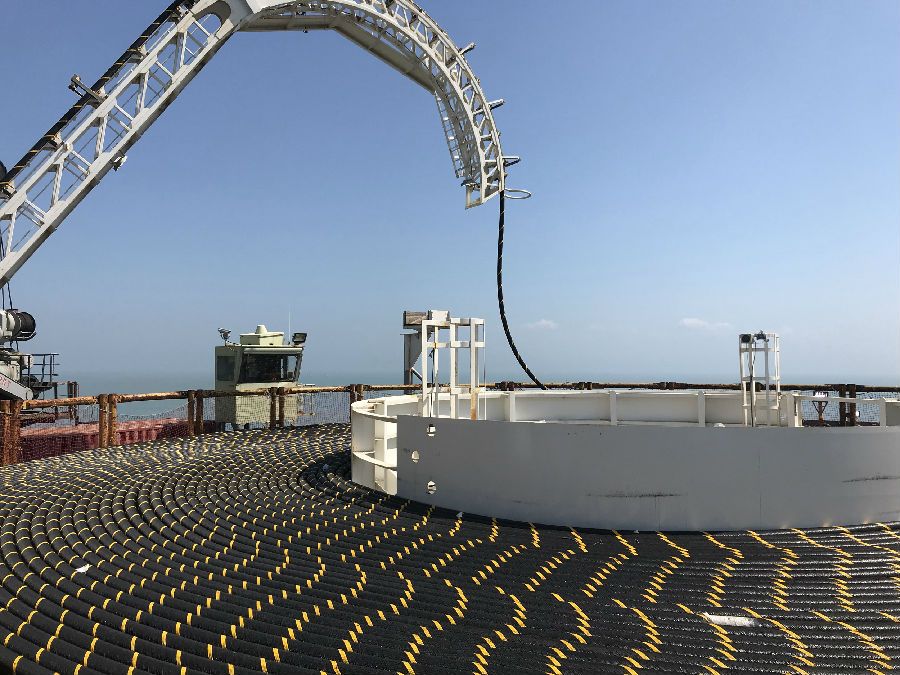
Underwater cables, as the name implies, are submarine cables.
In this article, we talk about precautions to be taken when grounding the protective layer of a submarine cable.
To talk about this topic, we have to start with the process of laying submarine cables.
Submarine fiber optic cable is the main artery to ensure that major regional networks around the world can interconnect with each other.
To set up transoceanic fiber optic cables.
A large roll of fiber optic cable is placed on the ship when laying. The most advanced fiber optic cable laying ship can carry 2000km of fiber optic cable and lay it at a speed of 200km/day.
Before laying, the cable route should be surveyed and cleaned up, fishing nets, fishing gear, and residues should be cleaned up, the sea vessel trench should be excavated, sea navigation information should be released, and safety alert measures
should be taken.
The submarine cable laying construction vessel is fully loaded with submarine cable and arrives at the designated laying sea area about 5.5km away from the terminal station.
The cable-laying construction vessel docked with another auxiliary construction vessel and started to reverse the cable, transferring part of the cable to the auxiliary construction vessel.
After the cable reversal was completed, the two ships started laying the sea cable in the direction of the terminal station respectively.
The deep-sea part of the submarine cable laying through the power positioning vessel, equipped with an underwater remote control robot, automatic positioning, and other fully automated construction equipment, accurately laying the
submarine cable to the designated route location.
Diggers at the bottom of the sea
Another part of the fiber optic cable laying vessel is the subsea excavator.
It is placed on the shore at first and attached to the fixed end of the submarine fiber optic cable.
It acts a bit like a plow in a field, and for the fiber optic cable, it is the counterweight that allows the cable to sink to the bottom.
The excavator will be towed forward by the boat and will complete three jobs.
The first is to use high-pressure water jets to flush away the sediment from the seafloor and form a fiber optic cable trench.
The second is to lay the fiber optic cable through the fiber optic cable hole.
Simply put the fiber optic cable laying ship is to put the cable, and the excavator is the real laying of fiber optic cable.
But the transoceanic fiber optic cable is thicker and less flexible, so the ship's forward speed should be strictly controlled.
The third is to bury the cable and cover the mud and sand on both sides with the fiber optic cable.
Single-core submarine cables must pay attention to whether the overvoltage of the sheath will exceed the insulation level of the polyethylene anticorrosive sheath.
In other words, submarine cables are different from XLPE power cables and aluminum overhead lines due to the specificity of their application sites.
Therefore, the lead sheath and the metal reinforcement strip must be grounded at once in order to avoid the lead sheath overvoltage and the destruction of the polyethylene anticorrosive sheath.
The reinforcement strip must also be grounded once at a certain distance.
When designing the earthing point and calculating the distance between the different fixing points, this must be determined according to the specific conditions of the cable route.
Grounding is usually done at the factory in order to ensure a watertight grounding point.
And the grounding point is usually designed with a flexible joint at the time of factory production.
There are also some products in other areas with semiconductor electric polyethylene sheaths, which can avoid the trouble of grounding the fixed point of the sheath.
Underwater cable factory soft joints are a major feature of underwater cable lines.
The factory flexible joint is the same size or slightly larger than the cable body.
It is as flexible as all connected cables and can withstand various mechanical stresses such as tension, twisting, and bending.
Therefore, factory flexible joints are very different in construction and performance from ordinary joints and are very similar to cable bodies.